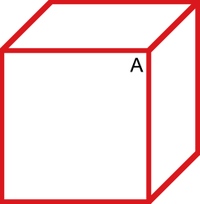Quantum Mechanics and Zen Koans
I have talked before about the ways in which some people abuse and misuse quantum mechanics.
Since I wrote that article, I’ve had loads of examples sent to me. I’ve also seen lots of books that are often pretty good.
Except for the quantum fig leaf that they use to provide authority and support for what the author is saying.
Even for highly gifted mathematicians – and I’ve known many – understanding quantum mechanics can be a bear. Remember that Einstein himself was unconvinced by the theory, and he was not just a gifted mathematician, but a superbly creative individual who could visualize like no-one else.
And that was part of his difficulty. One of the problems of popular interpretations of quantum mechanics is that they consist of forced metaphors and comparisons with familiar events rather than actual descriptions. Let me take an example: In a quantum system a particle following two different paths at the same time, while not being observed. For most people that sounds like a Zen Koan.
Because it is completely different from the way in which things work in the real world, it is very difficult to grasp.
Quantum mechanics is something that you have to learn to accept and get used to, rather than trying to imagine it in terms of familiar observations in the macroscopic natural world. Many of the concepts cannot be fully expressed in English. Many of the best science writers are always at pains to tell us that what they are saying is suggestive of the ideas, rather than being a complete description of a mathematical construct. Using written language to describe a phenomenon in the quantum world is a bit like using a tape measure to determine the volume of water in a puddle. You can come up with a rough approximation, but not an accurate number.
The only way in which you are able to really understand quantum mechanics is with a change in perception. The moment when people “see it” for the first time, it’s a bit like looking at a Necker cube:

If you look at the corner that I’ve marked “A,” is it pointing toward you or away from you?
Most people see it one way and then if they stare for a moment, it will “flip” it will look the other way.
It’s a simple visual illusion, but it demonstrated the perceptual shift that you need to really understand quantum mechanics. It requires you to be able to think in a completely new way, and very few people have been able to do that.
This is really what the Danish Physicist and Nobel Laureate Niels Bohr meant when he made the famous comment, “Your theory is crazy, but it’s not crazy enough to be true.”






